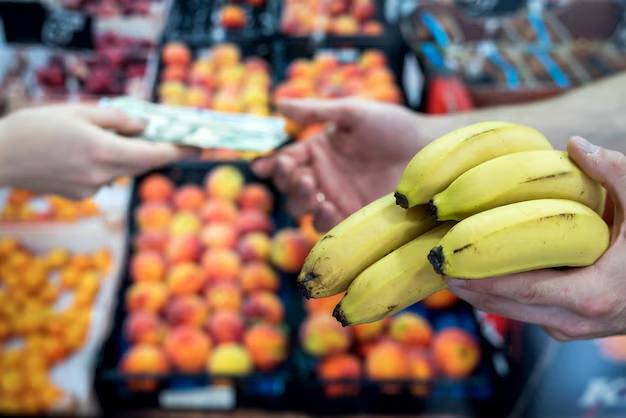Should You Be Refrigerating Bananas? Unpacking the Debate
🌟 Unlocking the mystery behind banana storage isn't just about keeping your favorite fruit fresh; it's a journey into the science of food preservation. Bananas are a staple in households across the world, loved for their sweet taste and nutritional value. But when it comes to storing them, opinions vary, especially about whether or not to pop them in the fridge. In this article, we dive deep into every aspect of banana storage, debunk myths, and help you decide what's best for your bananas.
The Nature of Bananas and Temperature
Bananas are tropical fruits, and their natural environment doesn't include cold temperatures. From their origins to their journey to your local grocery store, bananas are typically kept at warmer temperatures. Why? Because bananas are alive and still undergoing ripening processes, even post-harvest. Cold temperatures can disrupt this natural ripening, leading to changes in flavor and texture.
The Ripening Process
Bananas ripen thanks to ethylene gas, which they produce naturally. This ripening process changes the starches in bananas into sugars, giving them their characteristic sweetness and creamy texture. Cold temperatures can slow down this chemical transformation, impacting both taste and texture.
To Refrigerate or Not: Analyzing the Pros and Cons
When it comes to refrigerating bananas, opinions are divided. Here’s a closer look at the potential pros and cons:
Pros of Refrigerating Bananas
Slows Ripening: Refrigeration can significantly slow the ripening process, helping your bananas last longer. This can be particularly beneficial if you've bought a large batch and can’t consume them quickly.
Preserves Nutrients: Cold storage can help preserve the vitamin content of bananas by slowing down degradation.
Minimal Browning on the Inside: Though the peel might darken, the inside of the banana often stays fresher for a longer time when refrigerated.
Cons of Refrigerating Bananas
Peel Discoloration: One visible downside to refrigerating bananas is that their peels quickly turn brown or black. Although this change doesn't affect the fruit's interior immediately, it can be off-putting visually.
Texture Changes: Over time, refrigeration can alter the banana's texture, making it mushy rather than firm.
Flavor Deterioration: Cold can affect the natural flavor, leaving the banana tasting less sweet and more bland.
Tips for Optimal Storage
Whether you choose to refrigerate your bananas or not, some general storage practices can help extend their life and enhance their quality. Here are some temperature tips to consider:
Storing Bananas at Room Temperature
Separate & Hang: Keep bananas away from other fruits. Hanging them can prevent bruising and promote even air circulation.
Keep Stem Intact: Avoid breaking off the stem when separating bananas, as this can accelerate spoilage.
Use Ethylene Absorbers: Consider using ethylene absorbing sachets available in grocery stores to slow down ripening.
Refrigerating Bananas
Refrigerate When Ripe: For best results, refrigerate bananas only after they reach your desired ripeness.
Use a Sealed Bag: Store bananas in a sealed plastic bag to contain the ethylene gas around them, helping maintain taste and firmness.
Creative Uses for Overripe Bananas
Sometimes, despite your best efforts, bananas ripen too quickly. If you find yourself with overripe bananas, consider these creative ways to enjoy them:
- Banana Bread: A classic favorite that turns overripe bananas into a delicious treat.
- Smoothies: Blend them into a smoothie for a natural sweetener and nutritional boost.
- Pancakes/Waffles: Mash bananas into the batter for added flavor and moisture.
- Frozen Treats: Peel and freeze bananas to enjoy as a healthy, refreshing snack.
Frequently Asked Questions
Can Refrigerated Bananas Be Brought Back to Room Temperature?
Yes, though it won’t affect the peel discoloration, it can help restore some texture and flavor inside if consumed shortly after being brought out.
Why Do Bananas Turn Black in the Fridge?
The chilled environment causes physiological stress, making the banana produce compounds responsible for the darkening of the peel, even though the flesh remains unaffected for a time.
Is It Better to Store Bananas Whole or Sliced in the Fridge?
Whole bananas last longer. Sliced bananas tend to brown quickly; however, you can prevent browning by adding lemon juice or storing them in airtight containers.
Skimmable Key Takeaways 📌
Room Temperature Advantage:
- Best for unripe bananas and maintaining natural ripening.
- Hang bananas and keep away from direct sunlight.
Refrigeration Tips:
- Store ripe bananas in sealed bags in the fridge.
- Expect peel discoloration but internal freshness.
Extended Freshness Hacks:
- Use ethylene absorbers.
- Keep the bunch intact as much as possible.
Creative Overripe Solutions:
- Make banana bread, smoothies, or freeze for later use.
Food storage isn't just about extending the life of your groceries; it's about finding the balance between convenience, taste, and health. Whether you prefer your bananas chilled or at room temperature, understanding the impacts of your storage choices empowers you to enjoy this beloved fruit in its most delicious state. Remember, the real trick is to choose the storage method that suits your personal lifestyle and consumption habits best. 🍌
